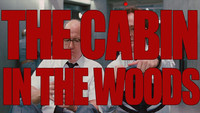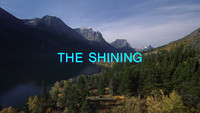A glance at director Sam Raimi's 36-year Hollywood career produces a resume that reads like every 14-year-old boy's dream job: superheroes and villains, the undead, fantasy worlds, the supernatural and the paranormal, as applied to everything from indie slashers to top-shelf summer blockbusters. In Freudspeak, if the films of Bergman and Kubrick are the superego of cinema, deliberate and anticipatory, then Raimi's are the id, governed -- or seemingly dis-governed -- by visual chaos and a primal, voyeuristic urge to want more.
More what? More more. Put Raimi in a room with five actors and a chainsaw, and by the fourth reel it’s a guarantee that there will be only one (or part of one) left. He doesn't settle for a single demonic spirit when there could be an army, or a river of blood when there could be a lake, or an ocean, or the next biggest thing after an ocean.
Raimi's cinema is proletariat; his films are a direct line to the nerd-heart of any adult child who ever tossed watermelons off a roof or duct-taped M-80s to a can of hairspray just to see what would happen. It peels two-dimensional characters from the pages of comic books and drops them into the real world, today, possibly at the deli around the corner, if not falling through it (wait a few minutes). In the tradition of cult cinema, his films are to be experienced, not watched, in a theater full of manchildren and spectators: big, loud, and confrontational — a communal exchange that reminds us of the romance and spectacle of the fading ritual of filmgoing.
His is a method of trial and error, publicly throwing ideas at the wall to see what sticks. Because of his relationship with his audience, his detours are no more than the musings of an artist in the throes of getting It right. It's an inclusive process that offers his audience a peek behind the curtain to watch the Wizard at work, wondering what his next trick will be.
And the tricks are many. Raimi films are nothing if not escapades into surreal worlds full up with all genera of CGI and stop motion spooks and demons. Specific to his horror films and the Evil Dead Trilogy in particular, his fancy for excess and sensory overload have placed him in a subgenre occupied by a select few, at the border of terror and kitsch – a path down which most directors, especially of the A-list pedigree, will not travel, much less blaze. It's a gamble which, much like the films of Cronenberg and Gilliam, cuts through the decorum of modern film substance and examines what lies underneath – what we all know is there, but don't expect or perhaps don't want to see; money shots for cinephiles.
The Evil Dead Trilogy is the ultimate money shot; a love letter to drive-in films and a cult classic in its own right. It's also a sheep in wolf’s clothing – an intellectual experiment in reactionary cinema masquerading as cult horror, both a parody and a genuine entry in the genre. Initially made for $90,000 with a crew of friends and family, the series concerns average joe Ash Williams (Bruce Campbell) as he goes head-to-head with Pure Evil, first in/with the backwoods of Tennessee, then at its root in 1300 A.D, as foretold in the Necronomicon Ex-Mortis: the Book of the Dead.
The trilogy becomes increasingly absurd and self-aware over its course, inverting its horror-to-comedy ratio along the way. The Evil Dead (1981) is the bait, luring fans in under the pretense of a straight, if not slightly flamboyant horror flick. Evil Dead II (1987) ratchets up both the gore and the theatrics, further implanting Raimi's brand of Vaudeville terror and setting the tone for its sequel. Army of Darkness (1992) is a headfirst plunge into Raimi's own id, artfully channeled by Campbell through a vortex of baroque plot twists and backdrops. Its narrative is almost entirely non sequitur, sharing both everything and nothing common with its predecessors or its genre of origin.
Whereas The Evil Dead and Evil Dead II are a parody of the horror genre, Army of Darkness is a parody of the trilogy itself, turning its own shock conventions — the chainsaw, the Necronomicon, Evil itself — into sight gag fodder and pregnant in-jokes for fans of not only the first two films but also more obtuse references like H.P. Lovecraft, Jason and the Argonauts (1963) and The Three Stooges.
There is little visual continuity between the three films' main title designs, other than each being very much of their era from a technical and design standpoint. The Evil Dead features a bold roman title card displaced though rippled glass – an optical effect common in late '70s B-horror films. The title emerges from a thick fog and stops at full-frame, pushing the viewer back, only to be pulled in again a moment later as the camera — or, Pure Evil — wanders the swamps of Tennessee in search of souls.
Evil Dead II also begins in a thick fog, this time becoming a backdrop for the film's preamble: an elaborate stop motion and FX montage introducing the Necronomicon. The fog returns again at the end to become the main title card, which zooms towards and past the viewer as an extension of the tunnel in the film's opening shot. Designed by VFX animator Katherine Kean, the card is a repurpose of The Evil Dead's official poster type design; the poster for Evil Dead II featured an unrelated typeface.
Army of Darkness, which is the only film in the trilogy to use a type design similar to that of its marketing campaign, also appends the titles to the end of its preamble, this time including a card for Bruce Campbell in the same style as the main title. Animated by title designer Jennifer Berkowitz, the wispy lettering mimics both the fog chamber behind it and the treatments of the previous two films’ titles. As with Evil Dead II, the title card zooms past the viewer as a transition into the film, this time as the epicenter of a vortex carrying Ash into the 14th century.
There are also several studio credits at the beginning of the Army of Darkness preamble, which are stylistically different from the main title cards but reference back to the rippled glass technique originally used in The Evil Dead.
While the trilogy titles are not visually or technically groundbreaking and do not share substantial ties with the content of the films themselves, they are nevertheless an appropriate topical treatment and an integral component of the preamble of each film. As with the genre Raimi set out to emulate only to hijack in the end, the titles are along for the ride, right on the border of terror and kitsch.
The Evil Dead (1981)
Title Design: August Films Inc.
Evil Dead II (1987)
Main Title Animation: Kathy Kean
Army of Darkness (1992)
Titles Designed by: Jennifer Berkowitz
Title Animation & Montage Compositing by: Perpetual Motion Pictures
Visual Effects Supervisor: Richard Malzahn
Optical Supervisor: Robert Habros
Animator: Sallie McHenry
Ink & Paint: Heather Davis, Judith Bell, Liz Lord
"Book of the Dead" Animation and Design by: Tom Sullivan







